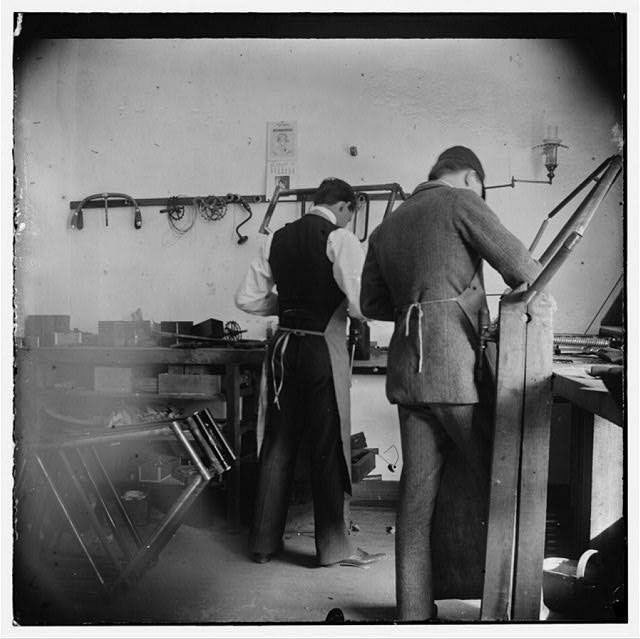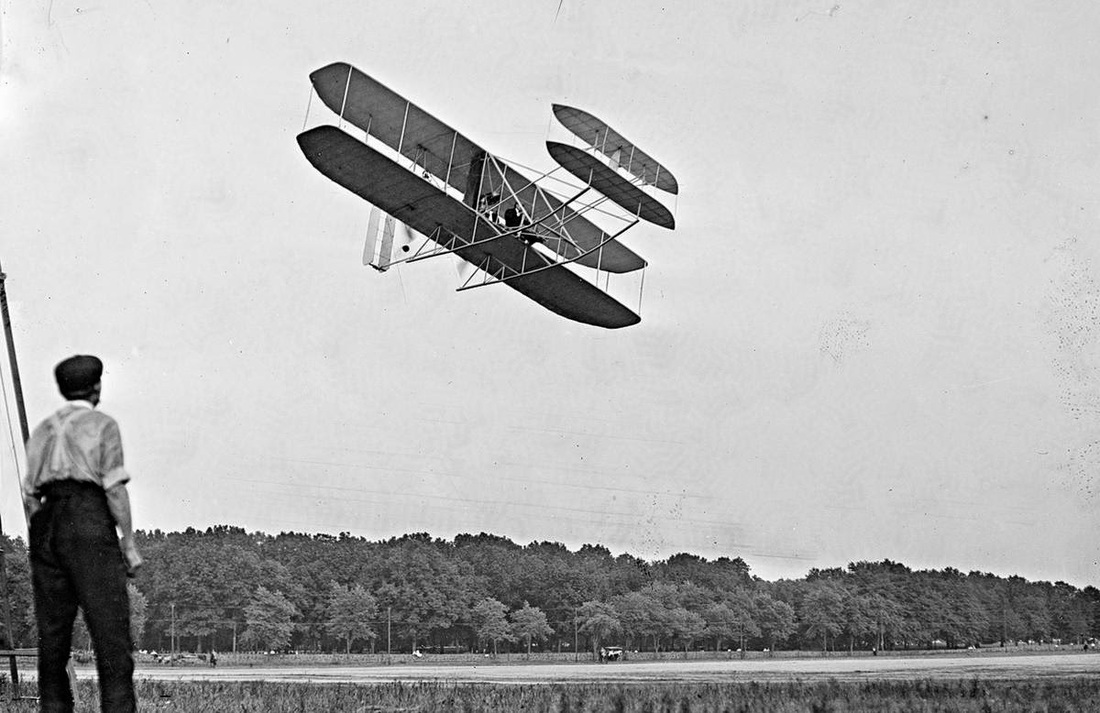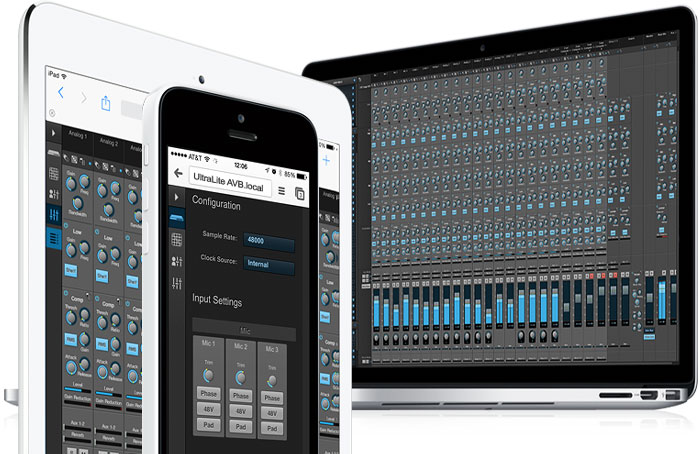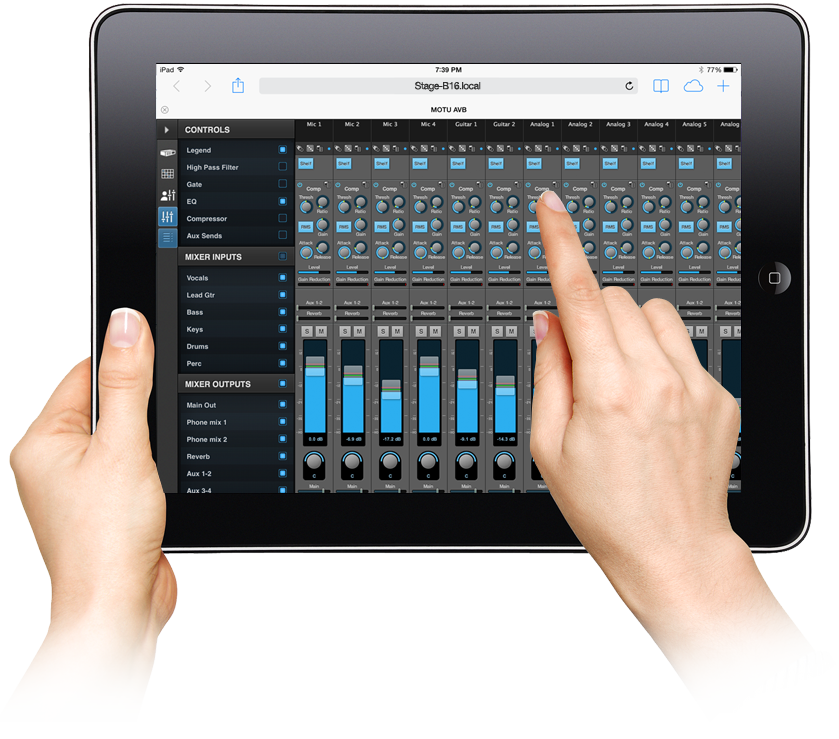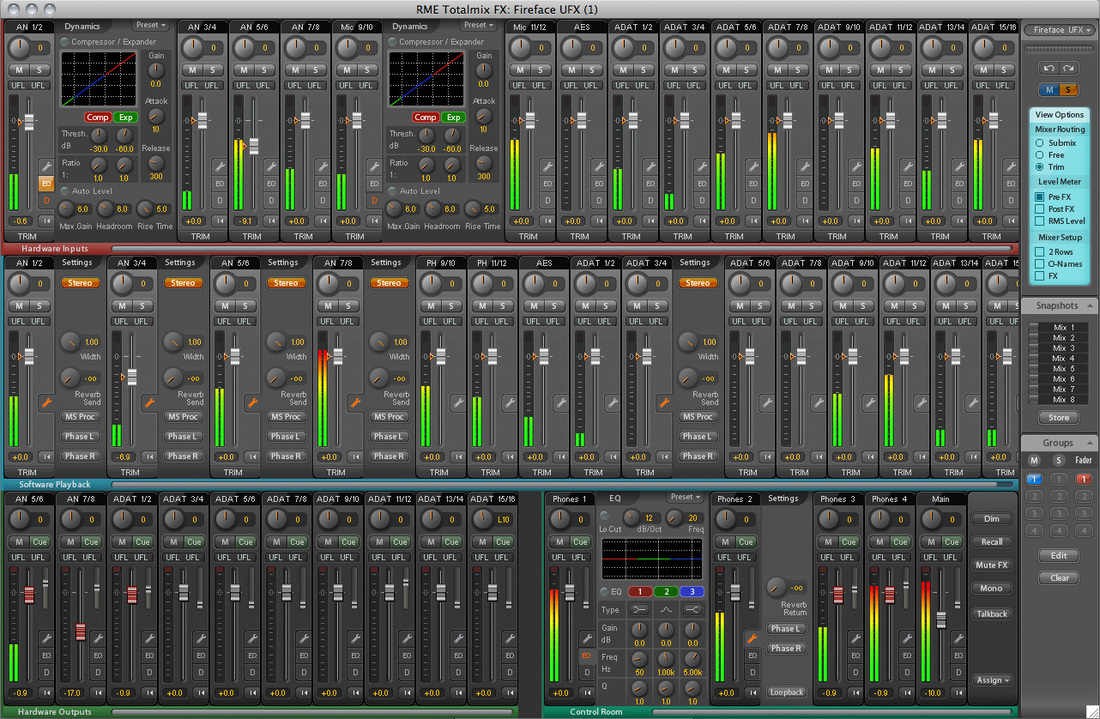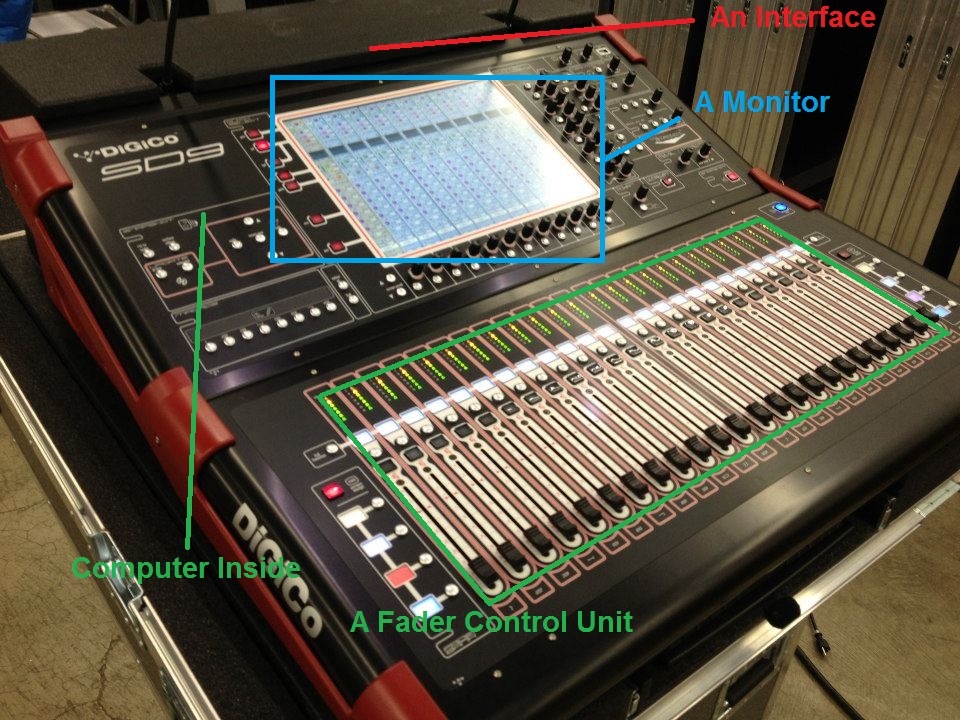HERE COMES THE NAYSAYERS - "BLAH, BLAH, LATENCY, BLAH" So what about latency? Let's talk about this. In a nutshell, latency is the delay you get when you play an instrument, it hits the A/D converter, then goes into the DAW and is processed, and then goes back out of the interface via the D/A converter. Kind of like if you've ever been on a phone call, and for whatever reason, you hear your voice come back loud and clear a second later. Talk about throw you off! "Let me call you back." This used to be an issue just a few short years ago, but technology has progressed to the point where latency doesn't have to be an issue anymore in recording or live mixing. Earlier today I was speaking with a representative from MOTU. We were both speaking about interfaces and such, and the topic of live mixing with a DAW came up. He said "we believe this will be the future of live mixing, and our MOTU AVB interfaces reflect this philosophy." I of course, couldn't agree more. So how does this all relate to latency and building your own modular live digital mixing console? With on-board DSP, any of these interfaces have what is called in the industry, "zero latency monitoring." This is because as soon as the signals from the assorted instruments come into the interface, they are routed right back out of the interface without being processed by the computer. Routing, levels, and even effects can be applied all within the interface using no RAM from the actual host computer. Focusrite interfaces can do this in 1ms or less (which is imperceptible to the human ear). The MOTU AVB series reportedly does it in about .66ms. That's extremely fast. No more will you have latency issues in monitoring anymore. Once this feature came out in affordable interfaces, it has opened up the door for DIY modular live digital mixing consoles. What's even cooler, is that if your church or facility already has in-ear monitoring, you are actually one step closer to having a killer modular live digital mixing console that is equally powerful (if not MORE so), then most live digital mixing consoles out there for a fraction of the price. Stay tuned for Part 3 as we discuss potential latency issues mixing FOH, using your favorite plugins, building the right computer, etc.
0 Comments
Your comment will be posted after it is approved.
Leave a Reply. |
Do you like vintage recording gear and articles? You should visit our sister site: The Vintage Audio Portal!
**Advertise With Us! We have thousands of visitors a day. Contact us here to learn more.
Archives
August 2021
Categories |
